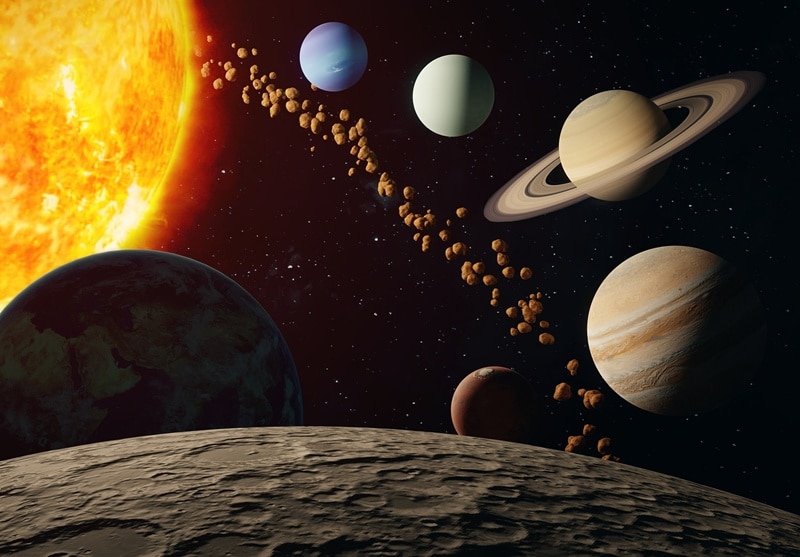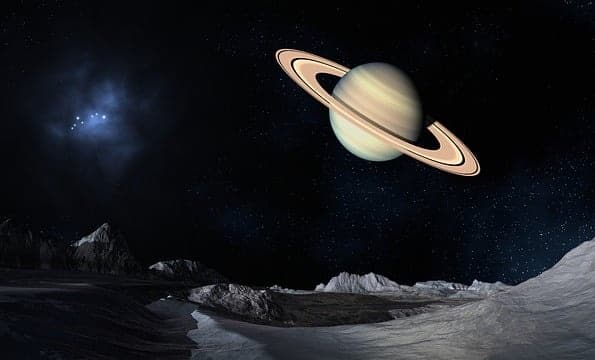

Have you ever looked through a telescope? Did you know that your telescope viewing experience and photographs can be greatly improved by using telescope filters?
The best telescope filters have many different factors to consider. One of these factors is the effect. This is what the filter does. Another thing to think about is the thickness of the glass. Different materials create different effects and are used for different things. The coating of your filter is very important because that is what will keep your filter from being scratched. Compatibility is very important because it determines if your filter will fit on your telescope. Lastly, transmission is the percentage of light that is let through your filter. All of these factors come together to create the best telescope filter for you.
More features: ISO compliant solar safe film, designed for a snug fit, produced by American Paper Optics
The Celestron EclipSmart Solar Filter is designed for Celestron 8” telescopes. It has velcro straps and pads so that the filter is sure to stay on as an extra safety measure. It is ISO compliant. It filters both IR and UV light, as well as 99.999% of visible light. It has been independently tested.
This product is perfect for those who care about safety and own a Celestron 8” telescope. It has two Velcro straps as well as four Velcro pads to make sure it will never move out of place. By filtering 99.999% of visible light, this best telescope filter will be sure to keep your eyes safe. You can rest easy knowing that SAI Global Assurance Services independently tested it.
More features: improves image contrast, fits into the 8 RASAs integrated filter mount, optically flat surfaces free of defects
This best telescope filter enhances your 8″ RASA by creating deeper contrast because it darkens the sky by blocking light pollution. It chooses which wavelengths to block but still lets in the right light. It doesn’t block emission nebulae wavelengths, so you can still see the nebula through your telescope.
This is the perfect product for people who live in a city and get a lot of light pollution. If it’s impossible to get to a dark place to use your telescope, this is the light pollution filter for you. It blocks light such as streetlights but still lets in the light from outer space so you can see the image you want to see.
More features: parfocal design, minimum exposure times
These color filters are interference filters and also block IR. It blocks red, green, and blue interference depending on which filter you use. They were designed for the Meade Deep Sky Imager PRO CCD Camera but can be used with filter wheels from other companies. These color filters help limit exposure time, and you don’t have to refocus when changing colors.
We found that this product is great when trying to view something in its true color. Sometimes color wavelengths get in the way of properly viewing your image, and with the right knowledge, you will be able to eliminate that problem with these filters. They are also great to learn with if you are new to this concept.
More features: blocks 99.999% of incoming light, ISO certified
This best solar filter for telescopes will let you safely view the sun. It comes in 10 different sizes to view and image the sun. It is attached using three screws, keeping it incredibly secure. The screws come with the filter. It blocks 99.999% of incoming light keeping your eyes and camera safe.
This product is great for those who own multiple telescopes and want a reliable filter for each one. Coming in ten sizes, chances are you will be able to find a size for you. Being attached by screws, you never have to worry about it shifting in place while you view the sun.
More features: transmission level of 98.3%
This is a glass twist-on light pollution blocking lens that can go on your telescope in order for you to look through your telescope or take photographs even if there is light pollution where you live. With this product, it will be as if you are out in the country with no light besides the stars and moon.
This best telescope filter is great for people who live in the city or suburbs but are passionate about looking at outer space through telescopes. It is the best telescope filter for hobbyists because it lets in 98.3% of light, which is a good amount for hobbyists but not the best for professionals.
More features: allows to observes detailed moon surface, 18% transmission
The Celestron Telescope Moon Filter is a 1.25” filter designed to get rid of glare and create greater contrast while looking at the moon. You can also use it to view bright planets or to reduce glare while gazing at the stars on top of sand or snow. It fits onto most 1.25” eyepieces.
This moon filter is great for people with multiple 1.25” eyepieces who want one product to fit them all. If you are a fan of using your telescope to look at the moon, this is a must-have. It is also incredible for viewing outer space on top of sand or snow, so if you live in a location that has either of those things, this is the filter for you.
Telescope filters make the details better and heighten the image’s contrast. They removed colors and wavelengths of light that are hurting the image. Professionals may use filters for things like classifying stars. But hobbyists mostly just want a clear picture.

The most common source of light that gets in the way of a clear picture is light pollution, like from street lamps or buildings. You can get colored filters to filter out specific colors that you don’t want. You can also get filters specialized for looking at the moon. Telescope filters help you enjoy the night sky more by improving your image.
There are a lot of important features to consider when thinking about buying the best telescope Trusted Source Emily Levesque: How Have Telescopes Transformed Our Understanding Of The Universe? : NPR Astronomers once gazed at the night sky and charted the stars using their naked eyes. Astrophysicist Emily Levesque describes how generations of telescopes have unlocked the wonders of the universe. www.npr.org filter. The first thing to consider is effect type. This is whether you want something to filter for the moon, to reduce light pollution, to block colors, and things like that. Also, think about glass thickness. The glass is specifically designed to be a certain thickness in order to achieve the desired effect. The thicker, the sturdier. Also, think about the material. Different materials do different things. The coating is very important because it is what protects your filter.
Almost most importantly, think about compatibility. You want to make sure the filter you buy fits the telescope you have. Transmission is the amount of light that is let in; you can think of transmission as a pair of sunglasses.
There are five main types of telescope filters. One is a moon filter Trusted Source The secrets to stargazing from your backyard | Learning holidays | The Guardian The moon is visible day and the night over the course of a month and on 7 May it will be a supermoon – a little closer to us than normal and appearing around 10% bigger. Look at the moon with your naked eyes and notice the dark and light-grey patches. Light-grey areas are mountainous highlands; the dark grey are long-dried-up lava beds called “seas” because early astronomers took them for actual seas. www.theguardian.com . These work similar to sunglasses. They reduce white light and produce a more clear view. The next is light pollution filters. They block light pollution that comes from cities and suburbs. There are also light blue filters, which create a better experience while looking at planets and galaxies. Narrow band filters improve contrast. Lastly, solar aperture filters filter out the sun’s rays to keep your eyes or your telescope from getting damaged. The Meade Glass Solar Filter makes it safe to look at the sun.
The glass thickness is determined by a lot of things. For one, it depends on what you are trying to filter. Some things require thicker glass to filter than other things. It also depends on the percentage of light filtered. Glass thickness will also determine how strong and durable your lens is. Some lenses are curved too. There are pros and cons to having thicker or thinner lenses. It all just depends on what the filter is trying to accomplish. The Celestron Light Pollution Imaging Filter has a glass thickness of 1.9mm.
Some materials used to make telescope filters include paper, glass, and more. Essentially, telescope filters filter out unwanted wavelengths of light and can protect you from UV or IR rays.
Different types of materials filter out different kinds of things. That’s why each kind of telescope filter uses a different kind of material, generally speaking.
The coating of the lens is what protects the lens. Without a coating, the lens can get scratched easily. Coatings have to be tested and applied perfectly so as not to distort the image. They can’t be too thick or too thin, and they have to be perfectly even.
Every lens has a coating because, without a coating, the lens would be too vulnerable because even dust can scratch glass.
The Meade CCD Color Filter Set uses multiple high transmission coatings. The Celestron Light Pollution Imaging Filter has a dichroic coating.
The compatibility of a filter means what telescopes it can attach to. Some filters are designed specifically for one telescope or one line of telescopes. Other filters can fit almost any lens of a certain diameter. For example, if you have a universal 1.25” filter, it can fit almost any lens that is 1.25”. But if a filter is made for just one telescope, even if another telescope’s lens has the same diameter, it won’t fit.
Transmission is the amount of light that gets passed through a lens. For example, visible light transmission is how much visible light can pass through the lens. Visible light transmission is known as VLT%. It is a percentage that tells how dark the image will be.
The transmission factor is how much light will reach the sensor of your camera. It depends on how many lenses there are and the glass and coating of the lenses. If the transmission is 100%, that means 100% of the light is reaching your eye or the sensor of your camera.
Telescope filters are very important. Without having telescope filters, you can’t customize your experience with your telescope. If you have filters, you can block out colors of light, focus on the moon, see solar eclipses, and so much more. Now that you know about the different features of a telescope filter, you can choose the right filter for you. Our Editor’s Choice, the Celestron EclipSmart Solar Filter, filters out 99.999% of the light, which means you can look at the sun. It has extra security with velcro. Our Best Value is the Meade CCD Color Filter Set, which has a set of colored filters to increase contrast in your image. Our Premium Pick is the Celestron Light Pollution Imaging Filter. With this filter, you can view the sky no matter where you live. Out of these three best telescope filters, there is definitely a filter for you!





